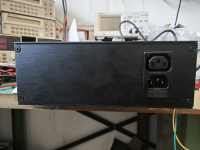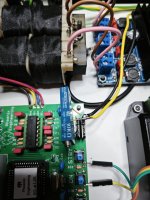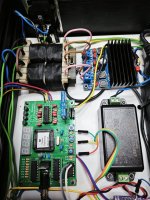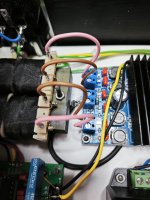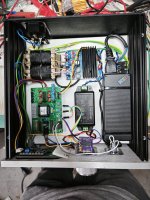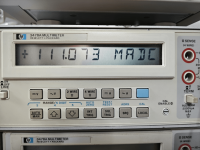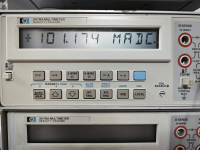Thanks, yes. Initially all I had was a blank screen, adjusting the contrast made the top row boxes visible.
OK, it was worth checking. It may not be of immediate help, but I can highly recommend one of the uber-cheap PC-based logic analysers for debugging serial communication issues, I've found it a really useful addition. As an example, https://www.az-delivery.uk/products/saleae-logic-analyzer?variant=27889816521
I should have written ….By agreement only in the USA. Canada and Mexico are handled by ralphfcooke
this is what I am seeing - seems to be a chip error? is this possible / has this happened before?
if we are to trust everything on youtube ...
The simplest solution might just be to get a copy of the latest version of the chip, v1.05.
You should be able to get it from Seth Hensel, who is back in the game.
I apologize for earlier posts where I offered to sell to US customers, but there
was a time when it appeared difficult to get hold of Seth.
You should be able to get it from Seth Hensel, who is back in the game.
I apologize for earlier posts where I offered to sell to US customers, but there
was a time when it appeared difficult to get hold of Seth.
Last edited:
How did I manage to miss this. That did the trick!In addition do you have TP1 connected to ground as that's necessary with the PCF8574 ?
Thank you 🙂
Just curious. I see that several people are including an encoder into their build. What are different people doing with their encoder signal and how are your processing it? Arduinos? Something else?
Thanks in advance.
Thanks in advance.
If you go back to post #83 on page 5 Pyramid explains the working of his rotary encoder pcb.
The pcbs are available from Oshpark on the first page, as either 'through hole' or
for SMT.
It has been found that there are sometimes issues with cheap Chinese encoders, but better items
from Bourns and the like work well.
The pcbs are available from Oshpark on the first page, as either 'through hole' or
for SMT.
It has been found that there are sometimes issues with cheap Chinese encoders, but better items
from Bourns and the like work well.
Oh, that rotary encoder! I was thinking about a motor mounted rotary encoder rather than the control switch. I was thinking about the motor variety because some of the motors that I'm looking at have them included (for a price). I'm not interested in feedback for motor speed, but possibly a motor speed display. A sort of Road Runner for the motor instead of the platter. Not much point, I guess.
I am using a RoadRunner. But I have seen some people making tachometers, not related to this project.
Does anyone know how much current you actually need for the SG-4 12V power supply? I see the wall wart at 12V, 230 mA, but I know that power supplies are often given quite a bit of headroom. I'm working on a LM317 regulator tapped off the motor power supply and want to check my power dissipation.
Thanks in advance.
Thanks in advance.
Hello Bill,
First of all thanks very much for the SG4 and the MA-3D project. It is great!
I have 5pcs. SG4 chips with the 1.03 version, would it be possible to upgrade them to the latest software version?
Please let me know how to proceed, I’m in US.
Cannot start a PM to you.
Thanks,
icsaki
First of all thanks very much for the SG4 and the MA-3D project. It is great!
I have 5pcs. SG4 chips with the 1.03 version, would it be possible to upgrade them to the latest software version?
Please let me know how to proceed, I’m in US.
Cannot start a PM to you.
Thanks,
icsaki
Looks good!, any pictures of the inside?
It's always interesting to see how individuals come up with their results.
It's always interesting to see how individuals come up with their results.
Hi my sg4 with one led for power up use see pictures.Does anyone know how much current you actually need for the SG-4 12V power supply? I see the wall wart at 12V, 230 mA, but I know that power supplies are often given quite a bit of headroom. I'm working on a LM317 regulator tapped off the motor power supply and want to check my power dissipation.
Thanks in advance.
Attachments
- Home
- Source & Line
- Analogue Source
- DIY 4 Phase Sinewave Generator for Turntable Motor Drive

